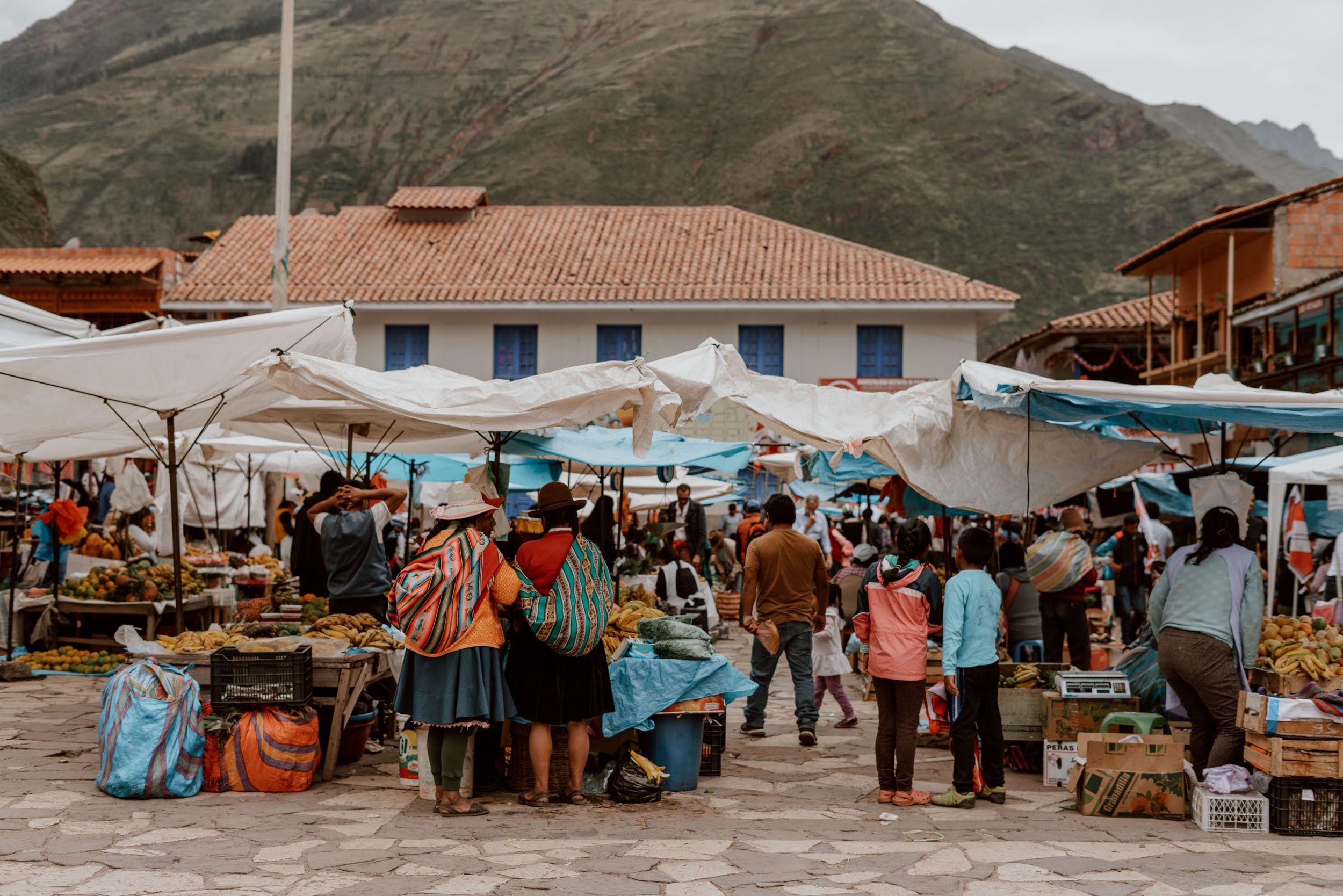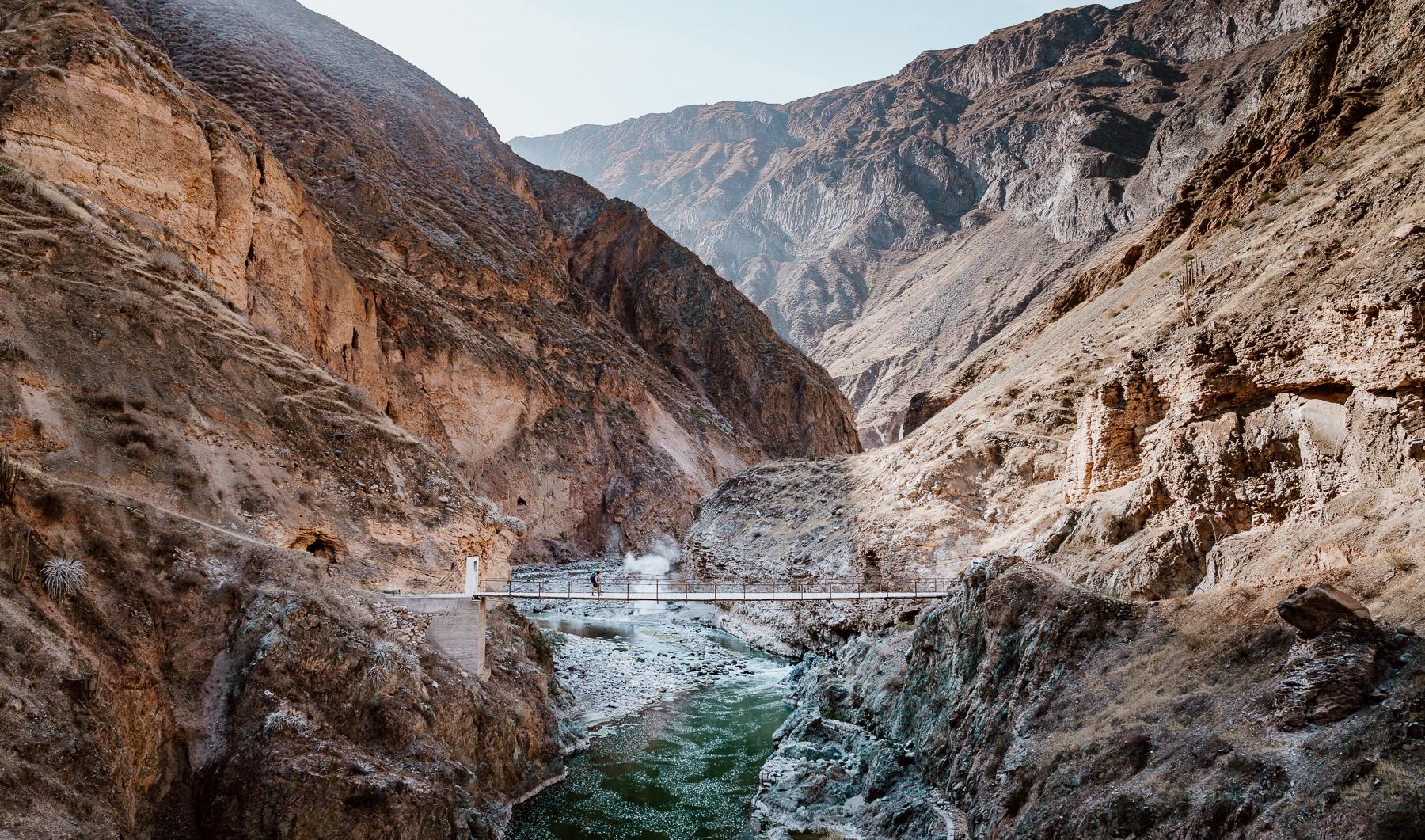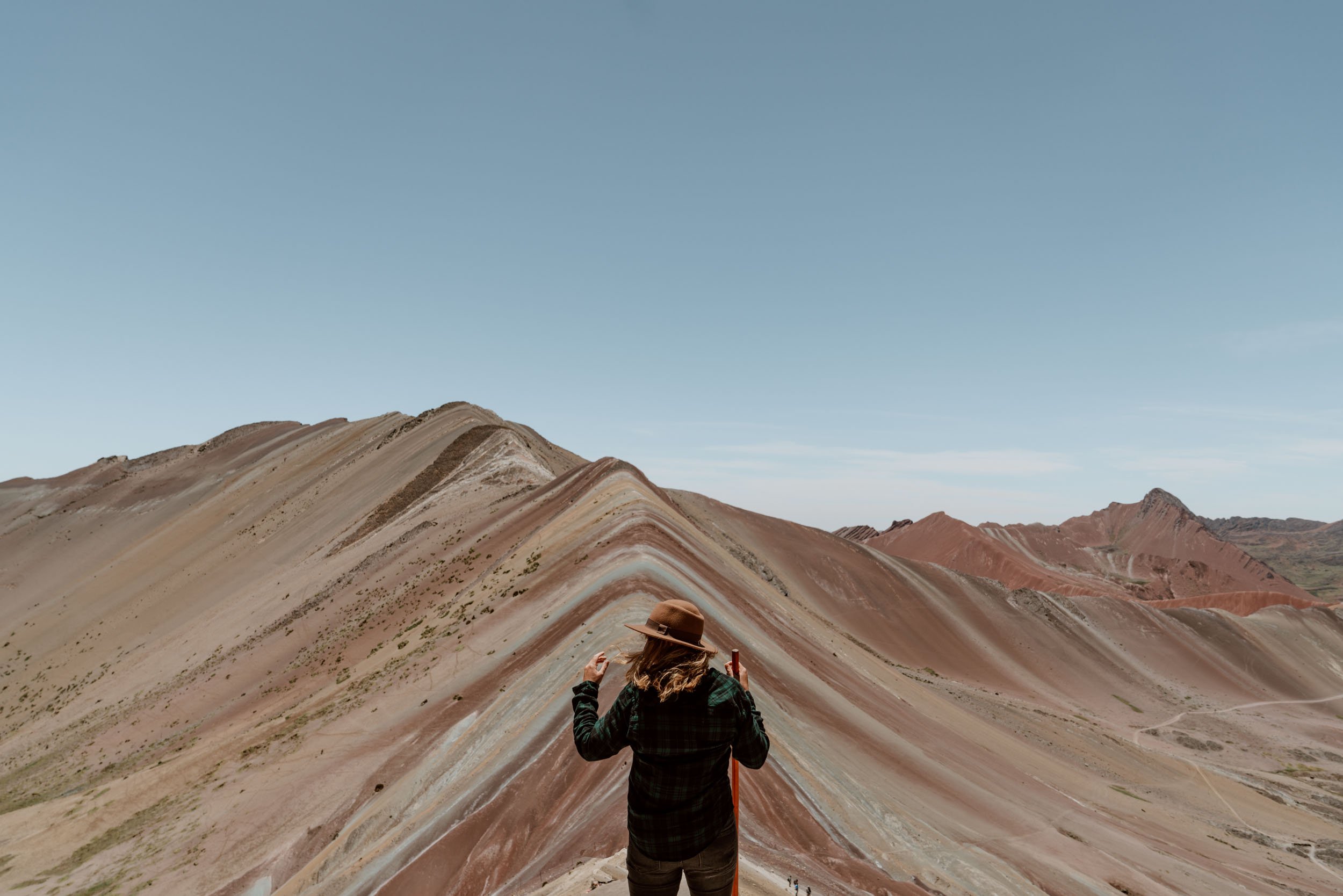Looking to plan your Peru travel budget, or work out if it’s cheap to travel in Peru? Then this is the post for you.
Whilst Peru itself is not an expensive country, its popularity as a tourist destination means that a trip here (especially that of the whistle-stop type) can cost you quite a lot more than you may have imagined. So, for those planning a trip we wanted to give you the most important information to help you successfully work out your Peru travel budget.
The costs below are the average we encountered in our time in the Peru in 2018-2019, and the individual items/experiences have been chosen for their ubiquity across the world, their popularity amongst backpackers and travellers in Peru, and the likelihood that they are costs you will have to factor into your Peru travel budget. We have also included our tips and advice on areas where you can save money, or where you may need to up your Peru budget slightly.
This allows you, to know exactly what you need to save to visit Machu Picchu, hike the Inca Trail, stay for a few days in Cusco, or do some fantastic treks in Huaraz, plus make a comparison of travel costs across South America.
Currencies are S/. Peruvian soles / £GBP / $USD / €EUR, and conversion rates and typical prices are accurate at time of publication.
Our Peru Travel Budget
Our first visit to Peru back in 2015 was part of a two-year trip from Mexico down to Brazil, which - understandably - required us to stick to a pretty tight budget. For our much shorter six week trip through Peru in 2018-2019 however, we allowed ourselves to travel in a way where we didn’t have to watch every single penny on the road with a joint-budget of £45 per day.
Keeping to that travel budget meant we still had to search a little longer for affordable private rooms in certain destinations, cook 50-60% of our meals in a hostel, travel with public transport, and take on hikes and experiences independently where possible - thankfully all aspects of our travel style which we’ll never ever change, whatever our budget.
Most importantly though, this budget meant that we managed to do pretty much everything we hoped to in Peru and had a fantastic six weeks. We do have to note however that the cost of our seven-day Inca Trail tour were not included in this daily budget as we partnered with G Adventures for that magical experience.
A double room in a standard hostel
Whilst they’re absolutely fine every now and again, we’ve definitely ventured beyond the point in our lives when we are happy to live in dorms full time. Now, they’re always a last resort.
This means that we’re always on the look out for a pleasant, good value private double. The prices vary quite considerably depending on the tourist appeal of the destination (with Cusco being by far the most expensive place to find a good standard double in Peru), but with a bit of effort we usually found what we were looking for, for around S/. 60 a night. The cheapest double we had in Peru? S/. 40 at a guesthouse on the Colca Canyon!
Tip | Doubles at locally-run ma n’ pa guesthouses and hostels will always be cheaper, but may lack the atmosphere and facilities you may be looking for in a hostel.
S/. 60 (£14 / $18 / €15)
A dorm bed in a ‘flash-packer’ hostel
In even the smallest backpacker hotspots across Peru, there will be at least one super-fancy hostel (often a party one) replete with swimming pool, cocktail-making barman, and all mod-cons.They’re often very nice - but often pretty pricy at S/. 30 - 45 per person in Cusco, Lima, and Arequipa. These larger hostels also offer varying sizes of dorm - from 14-person to 4-person, with the price decreasing the more people you’re sharing with.
Keep reading | The best hostels in Peru (coming soon).
S/. 40 (£9 / $12 / €10)
A last minute flight from Lima to Cusco
Having previously taken the bus between these cities at a time when flights were a little pricier, we now implore you to get on the goddamn plane.
It costs around the same price, and will get you there in just over an hour, compared to the 24 never-ending ones we spent travelling across the country by bus. This route is likely to be done by a large number of travellers visiting Peru on shorter trips, and it’s important to note that there are no direct international flights into Cusco (which is the gateway city to Machu Picchu and the Sacred Valley)
S/. 190 (£45 / $55 / €50)
Cheap breakfast out
To be honest, breakfast out in Peru isn’t really anything to get excited about. In small ma 'n’ pa restaurants, breakfasts can actually be pretty tricky to find, with some locals opting to have the lunch menu as early as 7 a.m! Where breakfast is available, expect a simple offering of bread, eggs, jam and bad black coffee.
If you want something solid or really good before lunchtime, we’d recommend to just cook it yourself or seek out a backpacker-friendly venue where you’ll find everything from pancakes to huevos rancheros - but the prices will be anything from 15 - 35 soles.
S/. 4 (£1 / $1.5 / €1.3)
Machu Picchu Entry
Heading on a Peruvian adventure? We’d put money on the fact that it involves a visit to Machu Picchu.
Exactly how you plan on reaching it is up to you (we’ve done it the absolute cheapest way, as well as via the Inca Trail), but at the very least you’ll have to stump up the entrance fee.
From January 1st 2019, the ticket rules and prices for Machu Picchu changed quite significantly and it’s important to understand them before you go. However, the cheapest standard entry ticket is S/. 152 for adults.
Keep reading | Our guide to Machu Picchu and its new 2019 ticket prices and rules or, if you want to reach it in the most magical way, everything you need to know about hiking the Inca Trail.
S/. 152 (£35 / $45 / €40)
Cusco Boleto Turistico
Cusco and the Sacred Valley provide a veritable smorgasbord of Incan Ruins ripe for exploration - but in order to visit most of them, you’ll have to invest in a Boleto Turistico.
There are a variety of different ticket packages on offer, the most comprehensive costing 130 soles.
Find out more | Everything you need to know about the Boleto Turistico.
S/. 130 (£30 / $38 / €34)
A Good Cup of Coffee
First things first, we’ve had a lot of bad coffee in Peru - but that’s not all that’s available. Instead, you just have to go searching for it in the right places.
Within popular tourist spots such as Cusco, Lima and Arequipa, there are numerous third wave coffee shops where caffeine aficionados can source a superb cup of locally grown and roasted stuff. Many even have non-dairy milk!
S/. 7 (£1.6 / $2 / €1.8)
Lunchtime Menu del Dia
We had so so many of these during both visits to Peru, and actually really miss them now.
The particular dishes served at these set-menu almuerzos -common at every local restaurant - depends on where exactly you are in the country, but it will always include a starter, main, and drink (and sometimes even a dessert).
We were particularly fond of seeking out vegetarian/vegan restaurants in each place, where the meals were usually of very high standard and provided us with a big hit of vegetable often missing from standard Peruvian restaurants.
An almuerzo is definitely a great way to save some money on the road, but perhaps think twice before having the 5 soles option. Instead, go for the 8 - 15 soles local option, but expect to pay 16-20 soles at more specialist or highly rated places.
Keep reading | How to travel on a budget in South America (coming soon).
S/. 10 (£2.3 / $3 / €2.6)
A Short Taxi Ride Within Cusco
If there is one thing Peruvian towns aren’t lacking, it’s taxis.
We promise you that within a few days of entering the country, you’ll be ready to rip off your hiking boot and fling it at the next taxi that toots in your direction!
In the larger cities, we actually preferred to use Uber. Not for cost (although it was usually a little cheaper), but more as an extra added layer of security and convenience. Peru isn’t afflicted by serious taxi scams to the same degree as other countries in South America (hello Ecuador!), but it has been known to happen.
Keep reading: our guide to staying safe in South America.
S/. 5 (£1.1 / $1.5 / €1.3)
Sandboarding in Huacachina
Fancy flinging yourself down a sand dune at sunset? Well, you’ve come to the right place.
Huacachina, and its famous desert oasis, is a must-do when visiting Peru for adrenaline junkies.
Keep reading: Sandboarding in Huacachina
S/. 50 (£12 / $15 / €13)
ATM fees
There is nothing worse than being charged to access your own money; to that end, ATM fees really piss us off.
Thankfully, by applying for a couple of extra-special bank cards and being a little tactical, we have found a way to avoid them.
In Peru, we recommend you use ATMs by the BCP bank. These are common throughout the country and did not charge us any ATM usage fee. The ubiquitous GlobalNet ones however, let you take out less cash per transaction and charge you 19 soles for the privilege (they’re the yellow cash machines).
Keep reading | How we avoid ATM fees on the road
S/. 0 (£0/ $0 / €0)
Ceviche from a Street Vendor
Food in South America is honestly not that spectacular (sorry to disappoint) - with, perhaps, the exception of Peru.
For those that enjoy seafood, we highly recommend giving ceviche a go, even if the idea of raw fish freaks you out a bit.
On the coast, many menu del dias and almuerzos will provide it as a starter option, or you can pay a little more for an a la carte option (20-35 soles). The most authentic way to enjoy it however is from a small stall in the street - just pick one that seems popular with the locals!
S/. 10 (£2.3 / $3 / €2.6)
A day’s Surfboard Rental
Peru doesn’t have the spectacular beaches of Ecuador and Colombia further north, but it does have a fantastic surf scene, even for beginners.
For those looking to catch some waves, be sure to hit up Huanchaco and Mancora.
Keep reading | Our guides to Mancora and Huanchaco.
S/. 20 (£4.6 / $6 / €5)
Large Bottle of Local Beer
Long bus journeys, long hikes and warm beach days - Peru provides innumerable reasons for wanting an ice-cold beer.
Bars will sell large (around 660ml) bottles for between 8 and 12 soles (15 was the most expensive we had) depending upon how upmarket or remote the bar is, and shops come in a little cheaper at around 7 soles, including the bottle deposit.
Tip | The most common beer available change from region to region, with Arequipeña, Cosqueña, Cristal or Trujillo the most popular.
S/. 10 (£2.3 / $3 / €2.6)
Shop Bought Pasta and Marinara Sauce
The basic and cheap dinner of choice for backpackers across the world is the ubiquitous pasta and sauce.
This price is based upon 400g of standard marinara sauce and 400g dry pasta - plenty for a couple of hungry travellers.
Keep reading | Find out how to spice up you hostel meals.
S/. 6 (£1.2 / $1.6 / €1.4)
Day ticket to Huascaran National Park
Hiking in Peru is rarely free, with almost all national parks and trails charging an entry or daily fee (which is fair enough).
For example, a day pass for Huascaran National Park (for access to many of the incredible hikes outside of Huaraz) costs 30 soles per person (it was 10 soles a couple of years ago), with a multi-entry pass available for 150 soles
Keep reading | Find out the best hikes in Peru or read our guide to Huaraz - the hiking capital of Peru.
S/. 30 (£7 / $9 / €8)
Two litre bottle of water
On the whole, tap water in Peru is not potable - just ask Emily who continues to ‘test it’, with not always pleasant after effects.
We hate to think how much we would have spent on water over our six weeks here - let alone how many plastic water bottles we would have gotten through - had we not each had a refillable water bottle with an in-built filter which makes water safe to drink from almost any source.
In fact, if there’s one single item you choose to buy amongst all the packing lists you read before boarding the plane to Peru, make it one of these. Go on, do it for the environment as well as your budget!
Keep reading | Find out five easy ways to be a more ethical and sustainable traveller or how to reduce plastic usage when you travel.
S/. 5 (£1.1 / $1.5 / €1.3)
1kg laundry
The price of laundry varied quite considerably across the country, with the most expensive kilogram for us found in Paracas (6 soles), and the cheapest in Cusco (2.5 soles).
As with anywhere in South America, you’ll usually find lavanderias to be cheaper than getting your hostel to do your laundry (most of them just give it to the lavanderia down the street anyway). Just remember to check the bag when it’s handed back to you to make sure it’s 1) your clothes 2) includes most of what you handed in.
S/. 4 (£0.9 / $1.2 / €1)
Average eight hour overnight bus journey
Peru is a huge country, and its sheer size can take most first timers a little by surprise The logical way to get around it then - assuming you’re not just jumping on flights from Lima to Cusco - is via many, many night buses. Even if you’re here for a two week vacation, we can guarantee that you will take at least one night bus!
The standard of buses is however really quite excellent (plus safe), and prices range from absolute bargains to quite eye-waveringly expensive depending on the company you travel with and how you book the ticket.
Keep reading | Our guide to taking buses in Peru, including how you can save up to 50% on a ticket, will be published soon (we promise!)





































